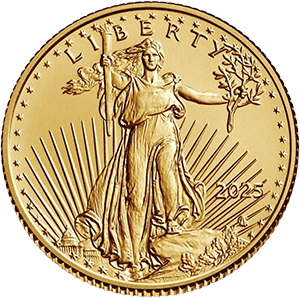It's no secret that the purchasing power of paper money erodes over time. Inflation occurs when more currency is introduced into the marketplace than the available goods and services can support. This causes prices for goods and services to go up, eroding the value of each individual unit of currency. Precious metals offer an important protection against inflation, since their value usually remains stable or even increases during times of high inflation. Here we'll take a closer look at how precious metals act as a hedge against inflation, and why they may be a wise investment for everyone from individual consumers to sophisticated institutional investors.

What Causes Inflation?
Inflation can have a number of different causes, but at its most basic, it occurs when the money supply grows faster than the economy. That is, there’s more money chasing after goods and services than there are goods and services available. The result is that prices go up. Inflation can also be caused by increases in the cost of production, such as rising energy costs or wages. When inflationary pressures are high, the demand for scarce resources like oil and gas can drive up their prices as well. A few other main causes of inflation include:
- Demand-pull inflation
- Increased money supply
- Devaluation
- Rising wages
- Policies and regulations
How Does Inflation Affect Precious Metals?
While inflationary pressures can have a negative effect on many assets, they often have the opposite effect on gold prices. That's because gold is a dollar-denominated asset, so when inflationary pressures cause the value of the dollar to decline, the price of gold tends to rise. This relationship can be seen clearly in a gold vs. inflation chart. As inflation increases, the price of gold generally follows suit. This makes gold a great hedge against inflationary pressures. When inflation is high, the purchasing power of the dollar declines, and gold becomes an increasingly attractive investment. For this reason, many investors view gold as a safe haven during periods of high inflation.

When it comes to inflation hedging, silver works in much the same way as gold. Both precious metals tend to increase in value as the cost of goods and services rises, making them valuable stores of wealth. However, some investors may debate which metal is better suited for this purpose. While gold is often seen as the more traditional choice, silver offers its own advantages. For one, silver is more abundant than gold, which makes it more affordable for investors with limited budgets. Additionally, silver has a variety of industrial uses, which means it may be less susceptible to economic downturns than gold. Ultimately, both gold and silver can be effective inflation hedges, and the best metal for any given investor will depend on their individual needs and circumstances.
Interested in Learning More?
If you are looking for a safe investment that will hold its value even in times of high inflation, precious metals may be the answer for you. Check out our FREE eBook to learn more about using precious metals as a hedge against inflation. Our team at American Standard Gold can help you get started with your investments and provide guidance along the way.
American Standard Gold was created to serve as a safe and stable diversification partner when buying, selling, and trading gold, silver, platinum, and palladium. Let us advise you on new products, portfolio diversification, IRA and 401(k) options, valuation of your collection, and other matters related to the precious metals market. Call us today at 877-795-9585 or fill out our online contact form to learn more about our solid solutions using precious metals to diversify your portfolio.

